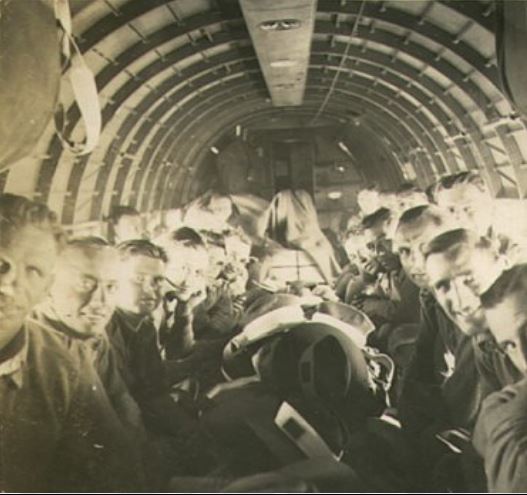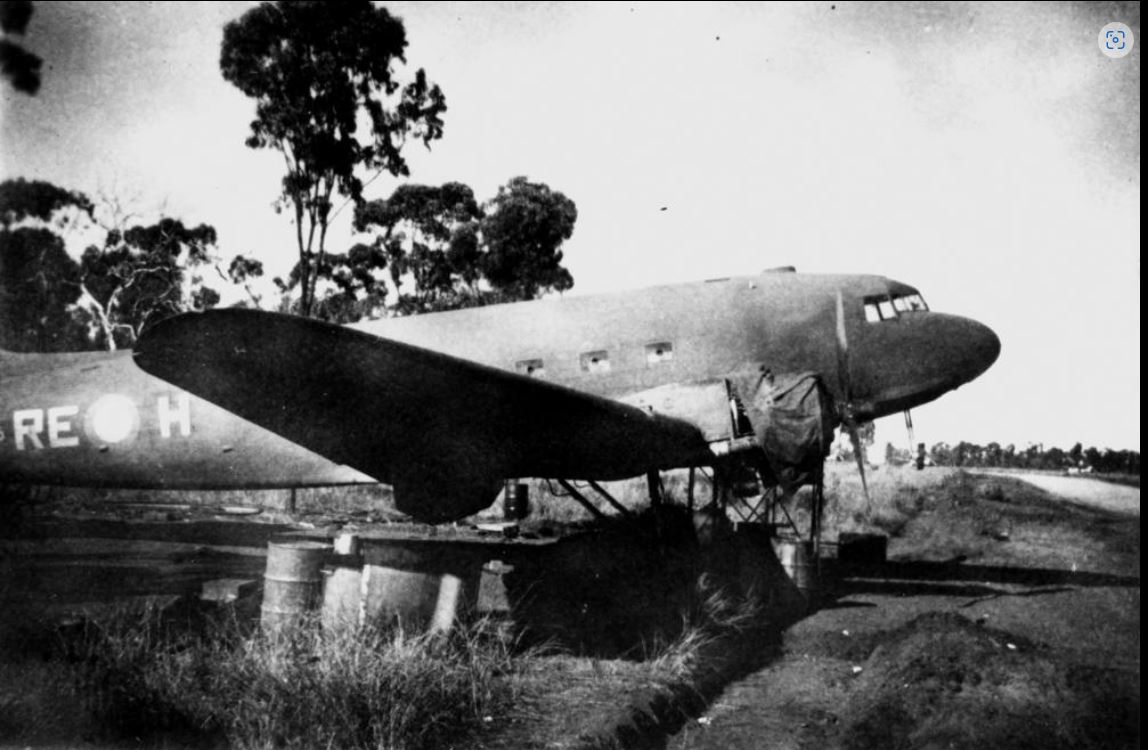No. 36 Squadron RAAF
From Our Contribution
 Inside a C-47 of 36 Squadron | |
 Dakota of No. 36 Squadron at Charters Towers, Queensland, 1943 - StateLibQld 1 196983 | |
Contents
[hide]Brief History
No. 36 Squadron RAAF, equipped with Douglas DC-2 aircraft, was formed at Laverton, Victoria, on 11 March 1942. During the early period the Squadron's major operations consisted of transport flights from Laverton to Batchelor with stores and equipment from I Aircraft Depot, and occas1onal flights to Maylands, Western Australia and Mareeba, Queensland. On 14 July 1942, the Squadron came under the operational control of the newly formed Air Transport Command. On 17 July 1942 the Squadron moved to Essendon which was the control point of the southern area for all freight. During the following month it also became a master depot for Douglas spare parts, which forced the Squadron to use some of the hangar space of the lodging USAAC 22nd Transport Squadron which controlled the barracks area. 36 Squadron's strength was increased to six DC-2s, two DH-84s, one DH-86, one Beechcraft and one Tiger Moth. This period proved to be very busy, with high serviceability being required to transport men and materiel to Port Moresby.
On 14 September a DC-2 proceeded to Port Moresby but crushed and burned whilst landing on Seven Mile Strip, killing all crew and destroying all cargo. In November the Squadron moved to Stock Route Strip, Townsville, with a rear echelon at Essendon. The Squadron immediately began transporting personnel, mail and general supplies to Port Moresby, as well as flights on the mainland. The beginning of 1943 saw many movements of the Squadron's detachments. The rear echelon that was left at Essendon was posted to Parafield to reform No. 34 Squadron. At the same time a Flight from No. 36 Squadron was moved to fulfil the old flight's role. On 19 January 1943 five OC-3 Dakotas were loaned from the USAAF-the first Dakotas to be operated by the RAAF.
No. 6 Squadron commenced operating a detachment in New Guinea from 1 June, carrying out general transport flights. 'B' Flight, later in the month, was detached to RAAF Richmond for the purpose of training and providing DC-2 aircraft for the Parachute Training Flight. The next year more changes occurred when on 20 Feb 1944 No. 36 Squadron again changed its operational base. This time the Squadron moved to Garbutt, Townsville. During the rest of the year the detachments at Richmond and New Guinea ceased to function. During August, a new record for the Squadron was established: 2989 hours being flown with 1,186 tons of cargo being carried.
With the disbandment of the Directorate of Air Transport, RAAF Air Transport's operational control was handed over to RAAF Headquarters. All aircraft that were on loan from the USAAF were returned. This left the Squadron strength at 12 Dakotas which mainly operated from Townsville to New Guinea. During January 1945, two Dakotas, stationed at Tadji, carried out supply drops to Army personnel. The drops were highly successful with up to 98 per cent recovery reported. April saw many key maintenance personnel being posted out. This caused the Squadron's serviceability to fall, and many commitments could not be met. The Squadron moved to Garbutt, on 1 Aug 1945. The Squadron's duties changed to the landing of occupation troops and transporting released prisoners of war home. These missions continued with detachments in Tadji, Morotai, Bougainville and later Singapore. By the end of October all Squadron detachments outside the mainland had ceased to function. The transport squadrons, including 36 Squadron, had moved 6500 prisoners of war and 1OO 000 lbs of freight from Singapore to evacuation centers.
At the beginning of November 1945, 36 Air Ambulance Flight was formed from 2 Air Ambulance Unit, which had disbanded at Archerfield. This brought the Squadron strength to 20 aircraft and 379 personnel. The new year started with detachments at Darwin, Ambon and Morotai. The latter detachment commenced a tri-weekly service to Tokyo and Hiroshima during February and two aircraft assisted the move of 93 Squadron to lwakuni, japan. After eight months of post-war courier services and moves of detachments throughout the region, the Squadron moved to Schofields, near Sydney, on 19 August 1946.
Unit Personnel
- Joseph Watson (RAAF) 22 Oct - 5 Dec 1945
Individual Honours
Notes
Content has come from Units of the Royal Australian Air Force - A Concise History - Volume 4 Maritime & Transport Units - Australian Government Publishing Service - 1995 pages 55 - 61.